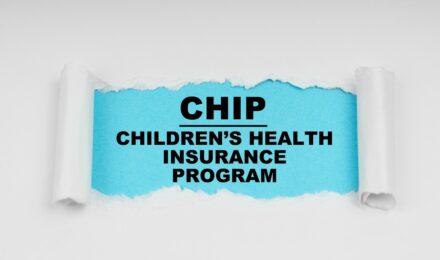Contents
The Social Security Disability Insurance (SSDI) program provides crucial financial support to individuals with disabilities. However, many recipients hesitate to re-enter the workforce, fearing loss of benefits. Fortunately, SSDI work incentives enable recipients to earn income while maintaining their benefits.
Understanding SSDI Eligibility
To qualify for SSDI, individuals must have a disabling condition preventing substantial gainful activity (SGA). The Social Security Administration (SSA) defines SGA as earning above a specific threshold ($1,470/month for 2024). However, SSDI work incentives allow recipients to exceed this threshold while still receiving benefits. [1]
To qualify for SSDI, applicants must provide comprehensive medical evidence documenting their disabling condition. This typically includes detailed medical records from treating physicians, diagnostic test results (e.g., imaging studies, lab tests), and/or statements from healthcare providers.
The Social Security Administration’s Blue Book, also known as the Listing of Impairments, outlines specific disabling conditions and their corresponding severity levels. Conditions are categorized into:
- Musculoskeletal disorders (e.g., spinal cord injuries, amputations)
- Neurological disorders (e.g., Parkinson’s disease, multiple sclerosis)
- Cardiovascular conditions (e.g., heart failure, coronary artery disease)
- Respiratory disorders (e.g., chronic obstructive pulmonary disease, cystic fibrosis)
- Mental health conditions (e.g., depression, anxiety, schizophrenia)
The SSA also evaluates the severity of each condition, considering factors such as: duration and frequency of symptoms; impact on daily activities and work-related tasks; and need for ongoing medical treatment. Some conditions, like cancer, may qualify for SSDI benefits if they meet specific criteria like metastasis or recurrence; an aggressive or terminal prognosis; or requiring ongoing treatment.
Autoimmune disorders, such as rheumatoid arthritis or lupus, may also qualify if they cause chronic pain and fatigue, joint deformity or dysfunction, or organ damage. Mental health conditions, like post-traumatic stress disorder (PTSD), may qualify if they result in severe anxiety or depression, social isolation or withdrawal, or inability to maintain employment.
SSDI – Trial Work Period
The Trial Work Period (TWP) is a vital component of the SSDI program, allowing recipients to test their ability to work without immediately losing benefits. During this period, SSDI recipients can earn any amount without affecting their benefits. The TWP enables SSDI recipients to explore employment opportunities, assess their ability to work, and adjust to new work environments. The TWP lasts for nine months within a 60-month (five-year) period. These months do not need to be consecutive, allowing recipients to try working, stop, and restart without penalty. [2]
During the TWP, SSDI recipients can earn any amount without reducing their benefits. However, once the TWP ends, the SSA will review earnings to determine continued eligibility. Following the TWP, recipients enter the Extended Period of Eligibility (EPE), lasting 36 months. During this time benefits stop if earnings exceed the substantial gainful activity (SGA) threshold ($1,470/month for 2024). Benefits resume if earnings fall below the SGA threshold due to disability-related limitations.
If SSDI benefits cease due to excessive earnings, recipients can request reinstatement within five years if their disability worsens or they become unable to work due to their disability. Recipients who have their benefits reinstated do not need to re-apply for SSDI. Instead, they will receive benefits without undergoing the initial application process.
SSDI recipients must report earnings to the SSA to ensure accurate benefit determination. Failure to report earnings may result in overpayment or loss of benefits.
What Comes Next?
Impairment-Related Work Expenses (IRWE) allows recipients to deduct disability-related expenses from their earnings. Examples include wheelchair purchases, medication, or assistive technology. By reducing countable income, IRWE helps recipients maintain benefits while working. Some recipients may receive subsidies or special conditions that reduce their countable income. Examples include vocational rehabilitation programs or support from the Department of Veterans Affairs.
A Plan to Achieve Self-Support (PASS) is a vocational rehabilitation plan approved by the Social Security Administration for SSDI recipients. The PASS enables individuals to set aside income and resources for specific expenses related to achieving self-support and eventual independence from SSDI benefits. [3]
The primary goal of a PASS is to help SSDI recipients develop skills and qualifications, obtain employment or start a business, increase earnings potential, and eventually transition off SSDI benefits. To qualify for a PASS, SSDI recipients must have a disabling condition, want to work or start a business, need training or education to achieve self-support, and/or have income or resources to set aside.
The SSA approves expenses related to achieving self-support, such as:
- Education and training costs
- Business start-up expenses
- Vocational rehabilitation services
- Child care or transportation costs
Income set aside under a PASS is excluded from countable income, ensuring SSDI benefits remain unaffected. This allows recipients to pursue self-support without fear of losing benefits.
Conclusion
SSDI work incentives empower recipients to re-enter the workforce while maintaining financial security. By understanding these incentives and seeking guidance, individuals with disabilities can unlock hidden opportunities to earn while receiving benefits. Don’t let fear of losing benefits hold you back – explore SSDI work incentives today.
Sources
- How You Qualify | Disability Benefits | SSA
- Trial Work Period (ssa.gov)
- Plan to Achieve Self-Support (PASS) | Disability Research | SSA
Contents
The Social Security Disability Insurance (SSDI) program provides crucial financial support to individuals with disabilities. However, many recipients hesitate to re-enter the workforce, fearing loss of benefits. Fortunately, SSDI work incentives enable recipients to earn income while maintaining their benefits.
Understanding SSDI Eligibility
To qualify for SSDI, individuals must have a disabling condition preventing substantial gainful activity (SGA). The Social Security Administration (SSA) defines SGA as earning above a specific threshold ($1,470/month for 2024). However, SSDI work incentives allow recipients to exceed this threshold while still receiving benefits. [1]
To qualify for SSDI, applicants must provide comprehensive medical evidence documenting their disabling condition. This typically includes detailed medical records from treating physicians, diagnostic test results (e.g., imaging studies, lab tests), and/or statements from healthcare providers.
The Social Security Administration’s Blue Book, also known as the Listing of Impairments, outlines specific disabling conditions and their corresponding severity levels. Conditions are categorized into:
- Musculoskeletal disorders (e.g., spinal cord injuries, amputations)
- Neurological disorders (e.g., Parkinson’s disease, multiple sclerosis)
- Cardiovascular conditions (e.g., heart failure, coronary artery disease)
- Respiratory disorders (e.g., chronic obstructive pulmonary disease, cystic fibrosis)
- Mental health conditions (e.g., depression, anxiety, schizophrenia)
The SSA also evaluates the severity of each condition, considering factors such as: duration and frequency of symptoms; impact on daily activities and work-related tasks; and need for ongoing medical treatment. Some conditions, like cancer, may qualify for SSDI benefits if they meet specific criteria like metastasis or recurrence; an aggressive or terminal prognosis; or requiring ongoing treatment.
Autoimmune disorders, such as rheumatoid arthritis or lupus, may also qualify if they cause chronic pain and fatigue, joint deformity or dysfunction, or organ damage. Mental health conditions, like post-traumatic stress disorder (PTSD), may qualify if they result in severe anxiety or depression, social isolation or withdrawal, or inability to maintain employment.
SSDI – Trial Work Period
The Trial Work Period (TWP) is a vital component of the SSDI program, allowing recipients to test their ability to work without immediately losing benefits. During this period, SSDI recipients can earn any amount without affecting their benefits. The TWP enables SSDI recipients to explore employment opportunities, assess their ability to work, and adjust to new work environments. The TWP lasts for nine months within a 60-month (five-year) period. These months do not need to be consecutive, allowing recipients to try working, stop, and restart without penalty. [2]
During the TWP, SSDI recipients can earn any amount without reducing their benefits. However, once the TWP ends, the SSA will review earnings to determine continued eligibility. Following the TWP, recipients enter the Extended Period of Eligibility (EPE), lasting 36 months. During this time benefits stop if earnings exceed the substantial gainful activity (SGA) threshold ($1,470/month for 2024). Benefits resume if earnings fall below the SGA threshold due to disability-related limitations.
If SSDI benefits cease due to excessive earnings, recipients can request reinstatement within five years if their disability worsens or they become unable to work due to their disability. Recipients who have their benefits reinstated do not need to re-apply for SSDI. Instead, they will receive benefits without undergoing the initial application process.
SSDI recipients must report earnings to the SSA to ensure accurate benefit determination. Failure to report earnings may result in overpayment or loss of benefits.
What Comes Next?
Impairment-Related Work Expenses (IRWE) allows recipients to deduct disability-related expenses from their earnings. Examples include wheelchair purchases, medication, or assistive technology. By reducing countable income, IRWE helps recipients maintain benefits while working. Some recipients may receive subsidies or special conditions that reduce their countable income. Examples include vocational rehabilitation programs or support from the Department of Veterans Affairs.
A Plan to Achieve Self-Support (PASS) is a vocational rehabilitation plan approved by the Social Security Administration for SSDI recipients. The PASS enables individuals to set aside income and resources for specific expenses related to achieving self-support and eventual independence from SSDI benefits. [3]
The primary goal of a PASS is to help SSDI recipients develop skills and qualifications, obtain employment or start a business, increase earnings potential, and eventually transition off SSDI benefits. To qualify for a PASS, SSDI recipients must have a disabling condition, want to work or start a business, need training or education to achieve self-support, and/or have income or resources to set aside.
The SSA approves expenses related to achieving self-support, such as:
- Education and training costs
- Business start-up expenses
- Vocational rehabilitation services
- Child care or transportation costs
Income set aside under a PASS is excluded from countable income, ensuring SSDI benefits remain unaffected. This allows recipients to pursue self-support without fear of losing benefits.
Conclusion
SSDI work incentives empower recipients to re-enter the workforce while maintaining financial security. By understanding these incentives and seeking guidance, individuals with disabilities can unlock hidden opportunities to earn while receiving benefits. Don’t let fear of losing benefits hold you back – explore SSDI work incentives today.






